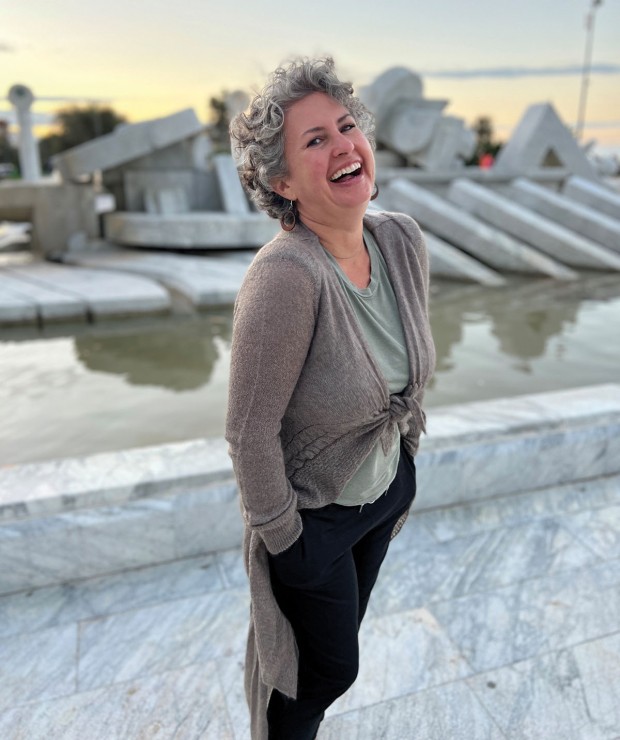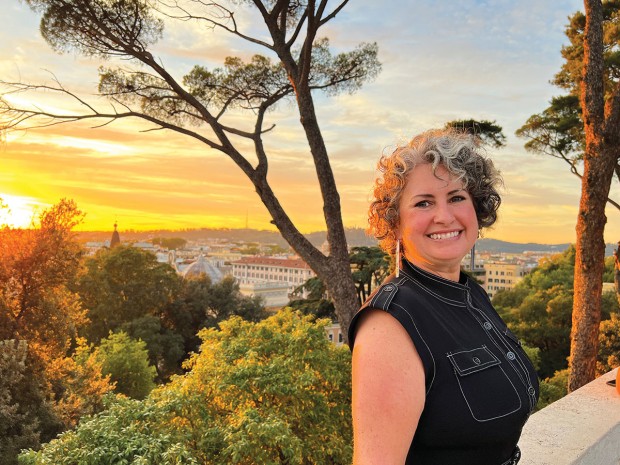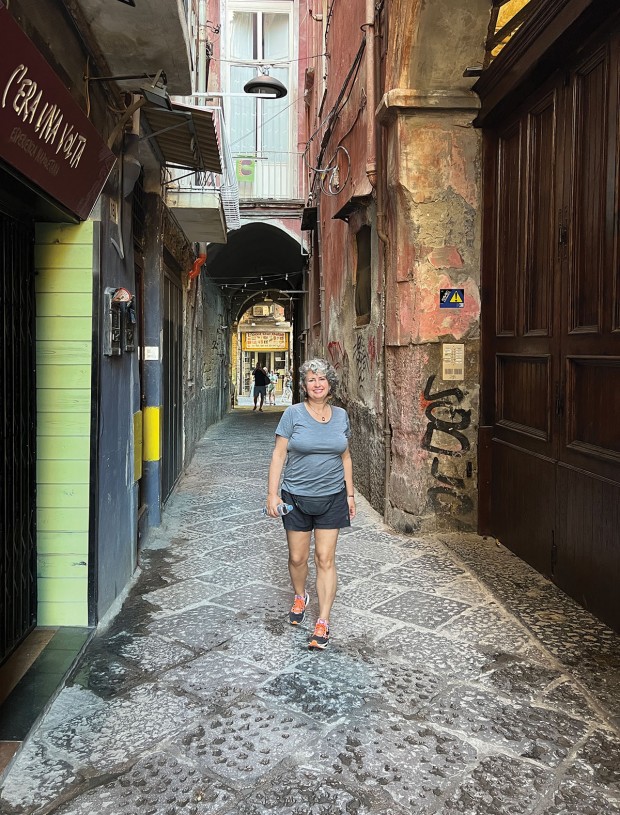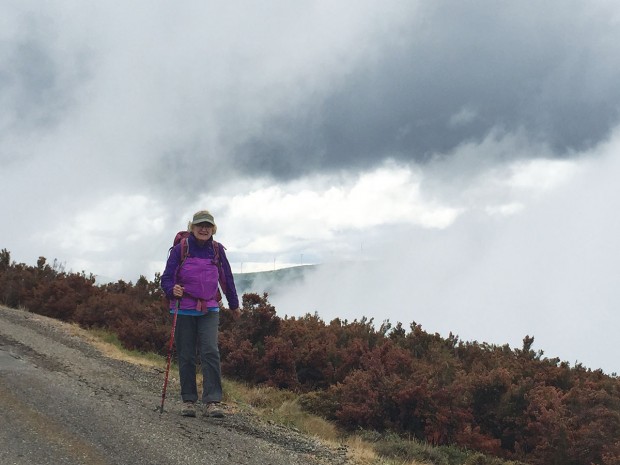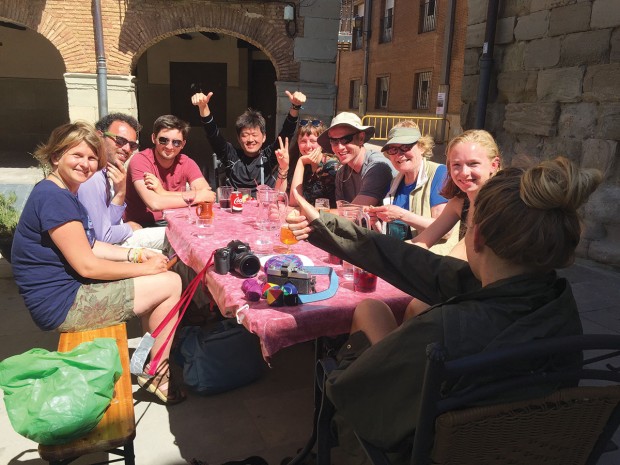You Go, Girl
Women traveling solo

They travel all over the world: here in the U.S., in South America, Europe, Asia, New Zealand and Australia, even Antarctica. They travel by plane, cruise ship, train, kayak, zodiac boat, bus, car, bicycle, tuk tuk, as well as by foot, of course, whether that’s walking, trekking, hiking, or backpacking. They sleep in hotels, in hostels, on strangers’ couches, in Airbnbs, in convents and castles, and in the great outdoors.
They are women traveling solo, and their numbers are surprisingly legion. According to Gitnux, a market-research company, 11% of all leisure travelers are traveling alone, and 72% of these solo travelers are women.
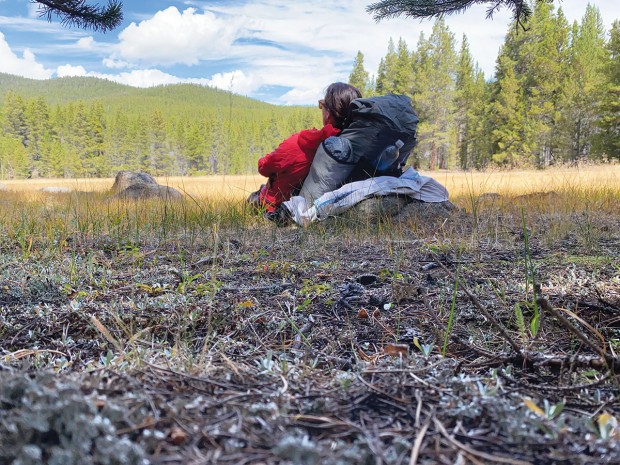
Lissa Pearson enjoys a 2021 trip on the Colorado Trail. She hiked the whole 486-mile trail in four trips, starting in 2017 and finishing with a two-week trip covering the last 230 miles in 2022.
Lissa Pearson, 46, took her first solo trip post-kids in the mid-2010s, when she did the Goodwater Loop around Georgetown Lake, a 27-mile route that is rated “moderately challenging,” north of Austin. She’s done what she considers major solo backpacking trips a half-dozen times. The longest lasted for two weeks. She also travels a lot with family and friends. She and her husband, John, have two daughters, Mae, 14, and Katherine, 16.
But there is something special about being on her own, too. “I saw a meme about a mom on her birthday saying she’d just like to have her brain to herself for one day,” says Lissa. “We were all in the living room one evening – my husband, my daughters, the dog, and our two cats – and I thought, ‘Every living being in this space depends on me.’”
When she’s traveling by herself, Lissa explains, “I am only responsible for myself. There’s no negotiating emotional or logistical issues with other people. It’s very freeing.”
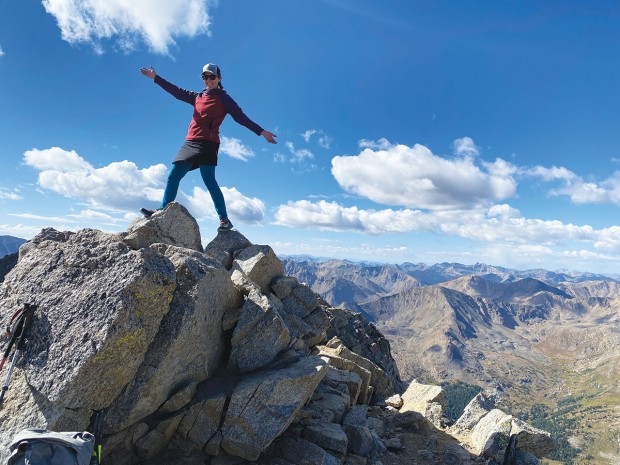
Lissa made it to the top of Mount Massive, the second tallest mountain in the Rockies, on the Colorado Trail in 2021.
Contemplating such a trip can be daunting when you’ve never done it before. Lissa recommends considering your current skills and planning the trip to be a manageable challenge. “Choose a trip that’s well within your skill set but has one area where you are pushing at your boundaries,” she advises. If you’ve never travelled alone, you might, for instance, travel solo to a place you’ve been before. “The being alone would be the skill you want to develop here,” Lissa explains. An experienced backpacker, Lissa is planning a sea kayaking trip as part of a group rather than alone because kayaking is the skill she wants to learn. Likewise, for safety reasons, she chose guided tours for an off-trail desert trip in Utah and for an upcoming trip to Yellowstone. “I have no desire to solo in grizzly territory,” she says.
Traveling solo can be surprisingly social. Lissa Pearson often meets fellow hikers on her trips. And when Lisa Beckman, 51, spent three months living in Italy, two of her goals were to meet locals and to practice Italian.
“I don’t think you can do this if you’re shy,” she says. “You have to push yourself.” She took her trip in 2022 during what she calls “her year of yes.” Lisa, who had taken six months of Italian at the Italian Cultural & Community Center in Houston to prepare for her trip, talked to everyone she came across when she arrived in Italy. She asked people, “Can I practice my Italian with you?” (Knowing how to say, “Please slow down,” was helpful as well, she says.) “If they said, ‘No, I’m busy,’ that was okay, my feelings were not hurt,” says Lisa, who is definitely not shy.
She even began to look for what she thought of as OMCs, or “old man corners,” when she arrived in a new place. It’s where she’d find retirees drinking coffee together. If she sat down with them, they’d talk with her.
And many people would even invite her to dinner and to parties. “I dropped a lot of hints,” Lisa says with a laugh. “I probably invited myself; I tend to do that.” Lisa, who does improv in Houston, even went to an Italian improv theater, got up on stage, and improvised in Italian. “That wasn’t completely successful,” she says wryly.
She eased into her adventure by starting with an adult study-abroad program (yes, that’s a thing) run by Temple University in Rome. For six weeks, she lived in a long-term Airbnb in Rome and took classes on art and art history with a group four days a week. “We had Friday, Saturday, and Sunday off to travel, and I met and sometimes travelled with people in my cohort,” she says. “It was a nice place to start.”
All the while, she was talking to locals, asking them where she should go next. She kept a running list in the notes section on her phone. “‘These are the five things you need to eat,’ they’d say, ‘and these are the five things you need to see.’ Most of the time, it was ‘need to eat,’” she admits.
After the study-abroad program ended, she gave up the Airbnb and traveled in earnest, down the west coast of the country to Puglia, the heel of Italy’s boot, and then back up the east coast. She stayed in a variety of accommodations. Hostels surprised her. “I thought it would be a lot of younger people and me,” she says, “but almost everyone was a solo traveler and there were a lot of women over 50.” She stayed for a while in a farm-stay or “agriturismo,” which is a working organic farm that also rents accommodations to tourists. “These range from higher-end than a higher-end hotel to pretty barebones,” says Lisa. Lisa even used a website called couchsurfing.com, twice arranging to sleep in an extra room in someone’s house. Next time, she says – and she is planning a next time – she will do a homestay, where she’ll stay with a family for a block of time.
Lisa made most, if not all, of her travel arrangements through phone apps and online. “My son calls our phones ‘that codex of Alexandria that we all carry around,’” says Lisa – and smart phones can indeed fulfill many roles for the solo traveler. They are good for far more than just keeping in contact with family and ordering Ubers. If you are camping or backpacking, you can use an app to turn your cell phone into a transponder or personal-locator beacon. Lisa used the HostelWorld app to choose her hostels in Italy. You can look for all-women hostels, hostels with private bathrooms, and other preferences. You can download apps with information about the public transit in your location. You can even use translation apps, including just plain old, free Google Translate, to communicate when there is a language barrier.
Lisa chose her Rome Airbnb online before she arrived. “I put a lot of work into finding that Airbnb,” she says. “I studied maps. I wanted it to be close to transportation and close to my school. I’d look for a nearby grocery store and that the area was residential. I read hotel forums for advice on which neighborhoods to choose and which to avoid.”
There are numerous Facebook groups dedicated to solo women travelers. Many travel agents and companies specialize in solo travel as well, including ones who will arrange self-guided tours, in which they handle the accommodations and the transfer of your luggage as you walk from place to place. Some solo travelers will sign up for group tours, where the details are taken care of and they can meet fellow travelers. RoadScholar, one such touring company, reported that in 2022, about 60% of their clients were married women traveling without their spouses.
When Sally McCandless decided to celebrate her 75th birthday by walking the Camino de Santiago nine years ago, she was looking for a trip where the route and the accommodations were already in place.
Although this was her first solo trip in a long time, Sally has always had an adventurous spirit. She was, in 1961, one of the very first Peace Corps volunteers, spending two years living in the Philippines working as a teacher’s aide in local schools. She made teaching her career upon her return, getting a master’s degree at Columbia University’s Teachers College. She taught for 17 years at the Awty International School.
The Camino de Santiago, or “The Way of St. James,” is a 500-mile pilgrimage that dates back to the early ninth century. Its most popular route runs from the French Pyrenees to Santiago de Compostela in northwestern Spain. People who walk the Camino are issued “credencials,” a passport-like document. This enables them to then stay in “albergues,” which are like hostels, located in the villages along the route. Their credencials are also stamped and become a souvenir of their trip.
Sally carried a backpack, weighing 15 pounds, that contained one change of clothes, a light sleeping bag to use for the bunk beds in the albergues, rain gear, and her toiletries. She walked the entire 500 miles in 30 days. That’s a little over 14 miles per day of walking. With some non-walking days scheduled in, her whole trip took 45 days. Some friends walked with her at the beginning for a few days. She met one of her daughters, who was then living in Switzerland, for two days. Her two other daughters joined her near the end, and her husband met her in Santiago, where they spent several days sight-seeing with a friend. But for weeks at a time, she was on her own.
Camino walkers don’t have to do the whole route. Even people who only do the last 80 miles qualify for a credencial, “which is a little bit upsetting to those of us who walked the whole darn thing,” quips Sally.
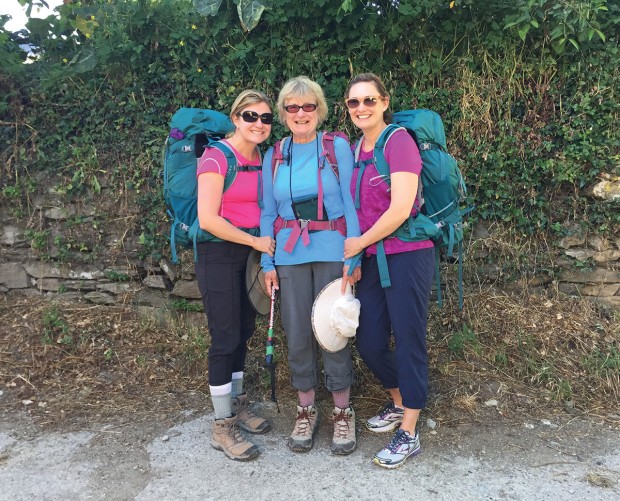
Sally, middle, was joined by her daughters, Abby McCandless Sparkman, left, and Sadie McCandless Carter, right, for the last 200 miles of her trip.
Sally didn’t do the trek for religious reasons. “I just love to walk,” she says. She had always wanted to do it since she read about the Camino when it became a UNESCO World Heritage site in the late 1990s.
Sally’s advice if you’re thinking you might want to try some solo travel? “I would say, do it,” she says. “It’s so satisfying to know that you did it.”
There’s an App for That
And usually more than one, plus websites and Facebook pages. Here’s a list of a few helpful apps for solo travelers.
Bounce: usebounce.com: Find places to store your luggage.
Couchsurfing.com: Find people to stay with or to open your home to travelers.
DayTrip.com: Find local drivers to take you from one city to another.
GetByBus.com: Find bus tickets for trips between European cities.
GetYourGuide.com: Look up and book tours and other activities where you are.
GPSMyCity.com: Find self-guided walking tours in over 1,500 cities.
Hostel World: Find and book hostels around the world.
LoungeBuddy.com: Find and book premium airport lounges while traveling.
Rail.Ninja: Book train tickets worldwide.
RoadTrippers.com: Find interesting places to stop while on a car trip.
Skratch World: Plan your trip and keep track of where you’ve been using the locations and dates of your photos and videos to generate a timeline of your trip.
Timeshifter.com: Lessen symptoms of jet lag.
VisitACity.com: Create your own personal travel guide to several European cities.
There are scores of specialized Facebook groups to connect with other women solo travelers, such as Solo in Style: Women Over 50 Traveling Solo & Loving It, with 514,600 members, Solo Female Travelers with 356,000 members, and Backpackers and Solo Travelers, with 17,500 members.
Want more buzz like this? Sign up for our Morning Buzz emails.
To leave a comment, please log in or create an account with The Buzz Magazines, Disqus, Facebook, or Twitter. Or you may post as a guest.



